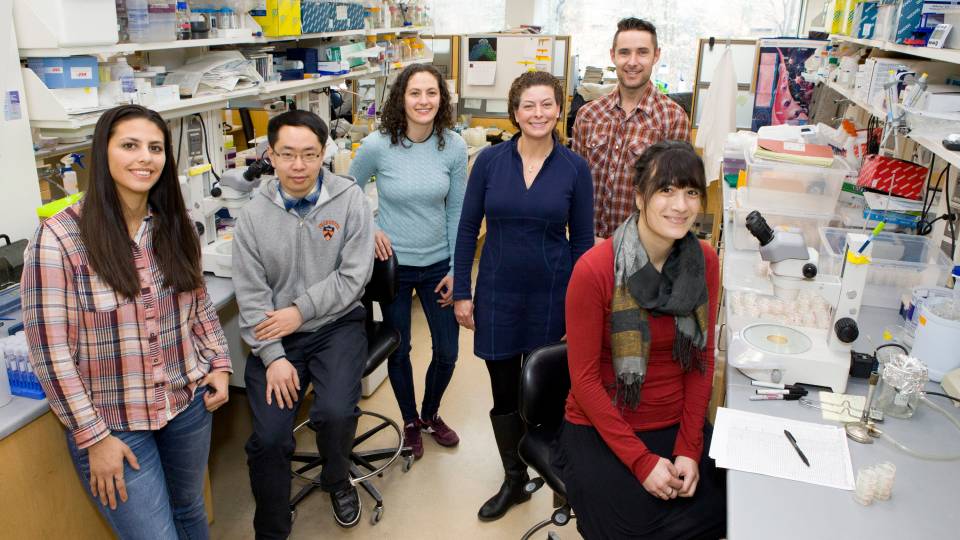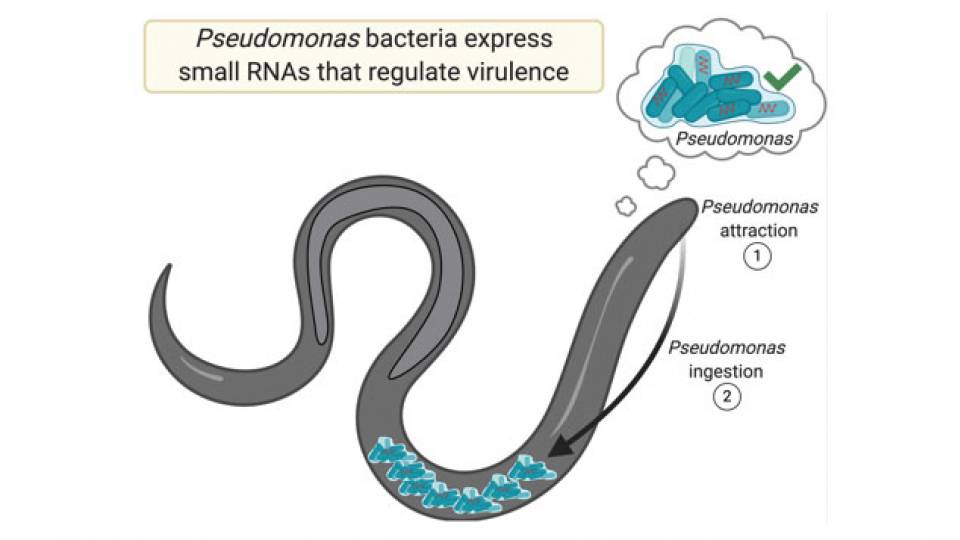Princeton scientists have identified genes responsible for controlling reproductive life span in worms and found they may control genes regulating similar functions in humans.
The work suggests that someday researchers may be able to develop ways to maintain fertility in humans, allowing women who want to delay having children to preserve that capacity and extend their reproduction, and to prevent maternal age-related birth defects.
The research, led by Coleen Murphy, an assistant professor of molecular biology and the Lewis-Sigler Institute for Integrative Genomics, was published in the Oct. 15 edition of Cell.
"Could you give someone a drug or supplement when they are in their mid-30s that would keep their oocytes (immature egg cells) healthy? That's the goal," Murphy said. The approach, she said, would be similar to the regimen of daily allotments of folic acid taken by pregnant women to prevent the development of spina bifida in the fetus.
In humans, reproductive aging causes problems in the quality of the eggs produced about a decade before the egg supply runs out. This can lead to miscarriages and worries about chromosomal abnormalities. "In humans, this suggests that quality, not quantity, is the limiting factor," Murphy said. "The question was whether the same is true in worms. And the answer is yes."
"We have found that there are many shared genes between worms and humans in terms of their reproductive qualities," Murphy said. "So this isn't just about worms and how they reproduce."
In the study, the researchers sought to understand what happens in roundworms, C. elegans, as reproductive aging sets in. They compared the activity levels of genes in normal roundworms with those of mutant roundworms that produce eggs until old age. They found that a complex of genes important to human reproduction is more active in the second group. These genes affect the ability of eggs to be fertilized, the proper segregation of chromosomes, DNA damage resistance and the very shape of the eggs.
Both humans and roundworms reproduce for about one-third to one-half of their lives. But there are differences. Humans' total egg supply is present at birth, while roundworms produce them during their lives. And, in the case of the mutant roundworms, their reproductive span is longer than their counterparts, but their lifespan is the same. As a result, 13-day-old mutant worms are still reproducing though their bodies have decayed to the point that they are unable to lay the fertilized eggs.
Murphy likes roundworms because their life cycle makes it easy to study them for aging issues. They live for about two weeks. It takes two and a half days for them to grow from egg to adult. Then they reproduce for about four days. If their life span or reproductive cycle is doubled through genetic manipulation, they can still be monitored in a reasonable amount of time for a scientist's purposes.
Murphy's studies of C. elegans have led to significant insights into how to control the aging process. In May, for example, a research team led by Murphy reported it had found the first evidence that decreasing caloric intake and tweaking the activity of the hormone insulin in roundworms has an impact on cognitive function. The findings have implications for the development of treatments that simultaneously help people live longer and prevent the devastating losses in memory that so often occur with age.
C. elegans are one of the simplest organisms that exist with a nervous system. Scientists, as a result, have already mapped out every neuron in their bodies. They were the first multicellular organisms to have their genomes completely sequenced.
The bacteria-gobbling worms, which are about 1 millimeter long, live in temperate soil environments like gardens and compost heaps. Scientists like to study them because they are cheap to breed and can be frozen. Though multicellular, the worms are simple enough to be studied in great detail. They are transparent, allowing scientists to watch their development in such detail that they have been able to track the fate of every cell produced at birth.
In addition to Murphy, other researchers on the paper included: Shijing Luo, a graduate student in the Department of Molecular Biology, who is first author on the paper; Gunnar Kleeman, a postdoctoral fellow in the Lewis-Sigler Institute; Jasmine Ashraf, a research specialist in the Lewis-Sigler Institute; and Wendy Shaw, a former postdoctoral fellow in the Lewis-Sigler Institute.
The research was funded by the March of Dimes and a National Institutes of Health New Innovator Award.



